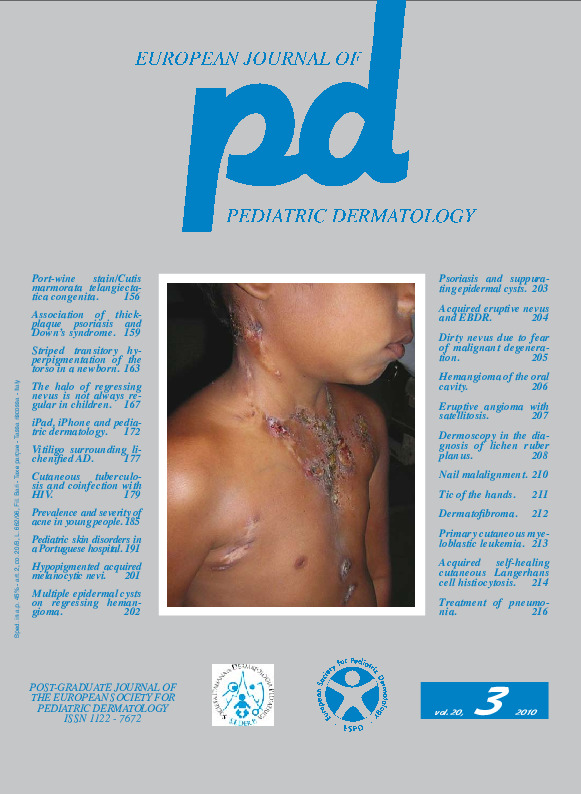Spontaneous regression of acquired eruptive nevus in a subject with EBDR.
Downloads
How to Cite
Annicchiarico G., Garofalo L., Bonifazi E. 2010. Spontaneous regression of acquired eruptive nevus in a subject with EBDR. Eur. J. Pediat. Dermatol. 20 (3): 204.
pp. 204
Abstract
Case report. On the fifth day of life we observed a little girl born to non consanguineous parents, with Bart syndrome on her right leg and foot. In the subsequent months skin and mucous blisters appeared all over her skin surface that healed with milia and scarring. Towards the three years the blisters tended to arrange themselves mainly in the axillary, groin-anal, elbow and knee folds, leading to the final diagnosis of recessive dystrophic epidermolysis bullosa inversa. The patient presented growth retardation, severe anemia, constipation, dysphagia, and syndactyly of medium severity. At 10 years an about 10 cm in size, acquired, speckled, eruptive, melanocytic nevus (Fig. 1) with net pattern on dermoscopy (Fig. 2) suddenly appeared on the residua of blisters in the left buttock. At the age of 18 the nevus regressed rapidly within 4 months (Fig. 3).Keywords
Acquired eruptive melanocytic nevus, Spontaneous regression, Epidermolysis bullosa

